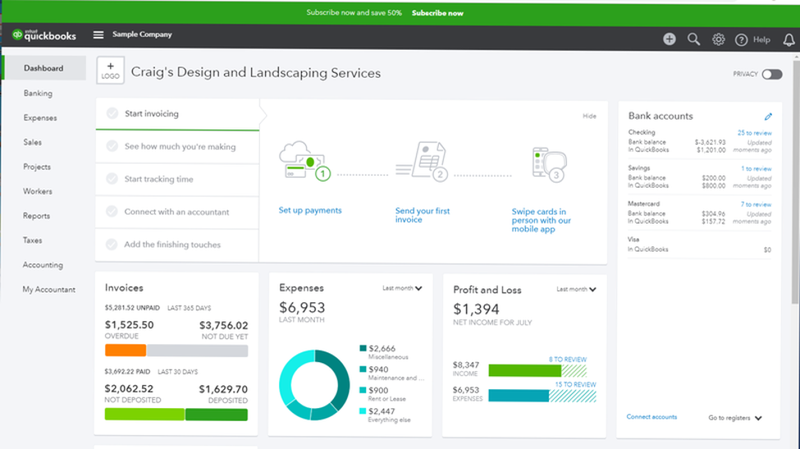

The terminology I'm used to, in the double entry accounting system, is that there are subsidiary ledger journal entries which are periodically summarized and posted to an account in the general ledger, or, in computerized systems, these general ledger balances are summarized immediately, though period end closing entries are still necessary. I will have to get used to the Quickbooks terminology. At the No Company Open screen, bottom right = Sample Files. No, Names are far more Powerful and functional.Ĭlose your data file. Names are Key Fields in the database = unique and Relational.Īspect of the transaction description (Memo field), like Num is." I'm wondering if the "Name" column is another way Quickbooks "and then Type, Date, Num, Name, Memo, Split, Amount, andīalance. Remember, we started this topic with my reply that it is All About Perspective. Item-based and Job - or name-based reports are more powerful than Financial reports, for this reason: the Relational database gives you access from Any Perspective. You would need to be more specific using Text, to describe: I use the Reports menu > Company & Financial Reports, and I ran the P&L Standard, and I see XXXX." Organization's Quickbook reports have columns for the general ledger Use the program and build your level of functionality, your experience, and avoid making Huge Setup errors in the very beginning. Don't start out more complex than needed. Individual AP" = There is a vendor name on every transaction. You don't typically need more than one AP, either. You don't need to micro-manage the chart of accounts. If this is the case, then maybe splits are the way multiple subsidiaryĪccounts (such as individual accounts payable) can be linked"Ĭan be Avoided. It sounds like you mean one general ledger income (or revenue) account. "When you say these can be linked to one income account, "In your example, when you say "charge item" do you You can mark it Billable or not, depending on if you charge this back to them, or are charging them some flat rate, or a progressive invoice of a defined Scope. You can Track this is specifically and directly related to a Customer:Job (job = subcustomer) and that is called Job Tracking. You use them on Estimates, Sales Orders, Purchase Orders, Sales Transactions and Purchase transactions. Items allow you to use quantity, cost and price, for that same "named" thing. This is how your QB file can been seen as related to a child care, a landlord, a construction, a church, a sporting goods, etc type of operation, even though All of these might file a 1120S tax form. They link to one, two or even three accounts and control the flow. The Items List is the operational activities and explains what you make, do, sell, charge, buy, buy and sell. The Chart of Accounts mostly meets your Entity's tax form filing. Maybe this is the way Quickbooks identifies subsidiary ledger accounts /

You say "splits = details, or allocations", and you speak of "items", You can use the Help menu to see the Year End task list. Immediately, though period end closing entries are still necessary."Īlmost no Closing tasks are required on your part. "and posted to an account in the general ledger, or, inĬomputerized systems, these general ledger balances are summarized You will see how the program racks your Net Income, as you see in my attachments. Everything is a Live Update, as you work. When you make any transaction, it is Saved to the database right then. The Financial and accounting part is simpler, now that we use computers. You take advantage that the Relational Database provides more complexity and the tools provide easy functionality. You can see this if you use Statement Charges, for instance. Example: AR exists by Customer Name, but there is not a literal subledger in the chart of accounts. You have a Computer Program doing the work think Virtual. There are subsidiary ledger journal entries" Terminology I'm used to, in the double entry accounting system, is that You get an Invoice from the vendor, because you are their Customer you enter that as a Bill to pay later, if you are accrual basis or otherwise want to accrue something not paid until a later date. I had a student whose file had been set up Backwards: Vendors are who you pay for goods and services, and Customers are those you charge. Yes, when I teach, I point out we are going to learn "QB-ese" so that you can use Help and understand the icons. "I will have to get used to the Quickbooks terminology."


 0 kommentar(er)
0 kommentar(er)
